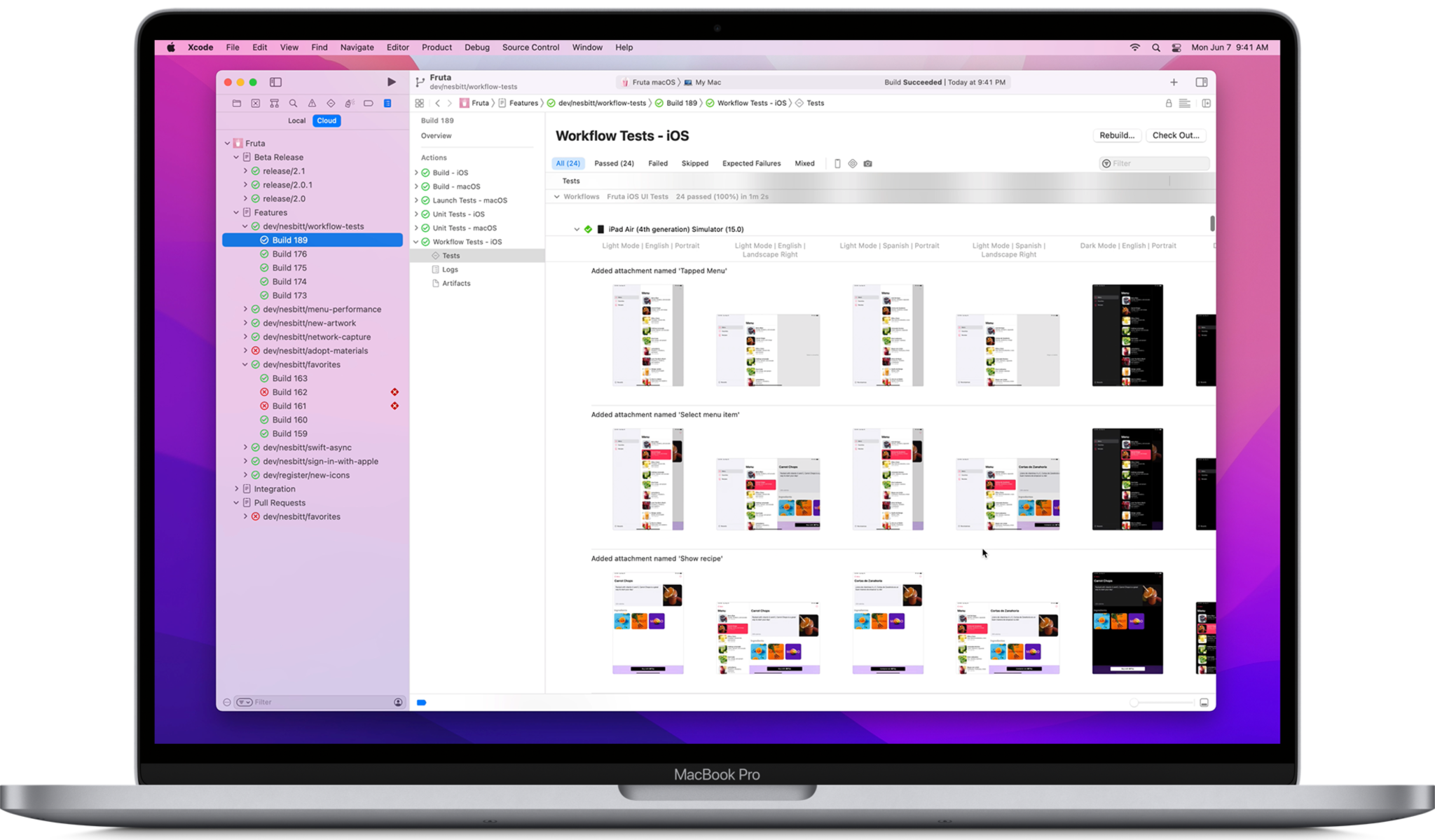

Since Xcode Cloud is built for Xcode 13 (and later), it’s specifically designed for the Apple platform. With Xcode 13 and Xcode Cloud, you can create, view, and comment on PRs, and merge changes into your codebase if you host your Git repository with a platform like GitHub or Bitbucket.
Xcode cloud code#
If you develop code as a team, or if you work on several changes at the same time, it’s common to use separate branches for each change and then create pull requests (PRs) to receive code reviews from your peers.
Xcode cloud archive#
You can also upload the exported app archive or a framework to your own server. When Xcode Cloud verifies a change to your code, it can automatically deliver a new version of your app to testers with TestFlight, or make a new version available for release with App Store Connect. Build, run, and test your project on multiple simulated devices in less time than you traditionally could. Xcode Cloud can help you organize, manage, and document source code changes with Git source control, improving your project’s quality by tracking and reviewing code changes. What’s included in Xcode Cloud? Continuous Integration Stay tuned to the MacStadium blog for updates over the next few months as Apple moves closer to a widespread release sometime in 2022. So, what do we know about Xcode Cloud so far and what does it mean for iOS developers? We’ve rounded up answers to your initial questions. For many years, MacStadium has been the infrastructure backbone of CI/CD platform Buddybuild (acquired by Apple in 2018), so we’re excited to see that Apple is really making an effort to ensure macOS and iOS developers learn and adopt CI/CD as an investment in their professional development future with this new Xcode Cloud platform. We applaud Apple’s move to increase adoption of continuous integration and delivery in the iOS and macOS space, as our past survey results have indicated that a large percentage of developers on smaller iOS and macOS development teams are not yet benefitting from CI/CD. Apple says that Xcode Cloud will “accelerate the development and delivery of high-quality apps by bringing together cloud-based tools that help you build apps, run automated tests in parallel, deliver apps to testers, and view and manage user feedback.”
Xcode cloud software#
Big news from WWDC this week! In addition to macOS Monterey, iOS 15, iPadOS 15, and a host of other new software features, Apple announced a new CI/CD service built into Xcode and integrated with TestFlight called Xcode Cloud.
Xcode cloud how to#
Learn how to review Xcode Cloud usage data. You can track compute hour usage across your team in App Store Connect and the Apple Developer app. Xcode Cloud runs tests in parallel with other actions, such as analyzing, archiving, and building, so you’ll get results quickly. For example, running 5 tests of 12 minutes each equals one compute hour. Compute hoursĪ compute hour is an hour of time used to execute a specific task in the cloud, such as building an app or running automated tests. Please note that unused compute hours don’t roll over to the next month. Learn how to completely disconnect all services from Xcode Cloud. In some cases, this may take several hours.


 0 kommentar(er)
0 kommentar(er)
